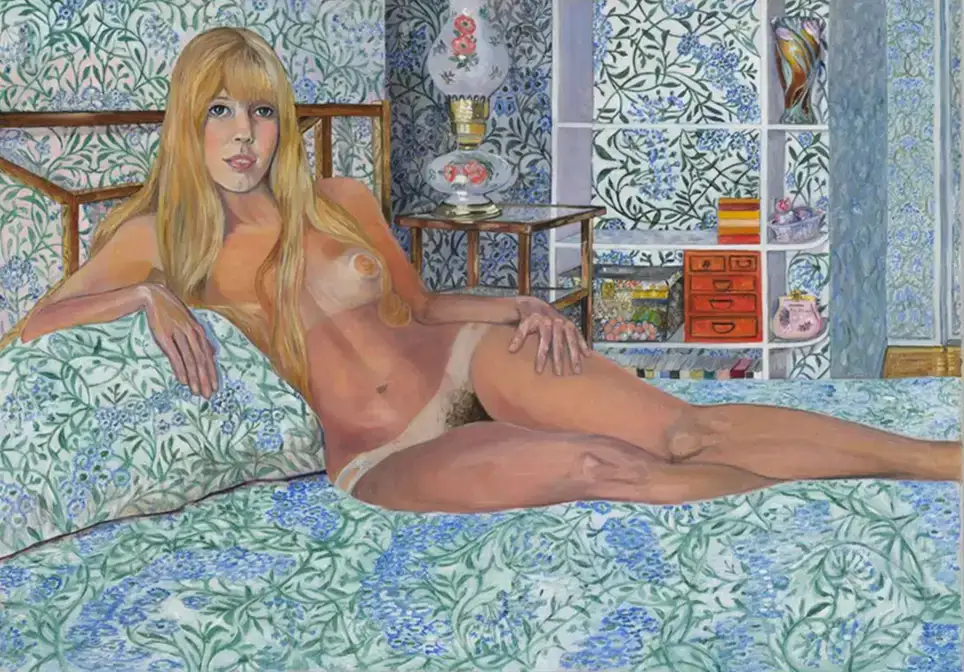
Sylvia Sleigh, Felicity Rainnie Reclining
42 1/4 ~ 60 in. (107.3 ~ 152.4 cm)
As a feminist and a founding member of the Women’s Caucus for Art, Sleigh used her paintings to critique the objectification of women while celebrating the beauty and individuality of her subjects. Her meticulous, intimate portraits stood in contrast to the abstract movements of the time, emphasising personal and political narratives, and her work remains a significant contribution to feminist art, redefining how the human form is perceived and challenging the boundaries of representation in the art world.
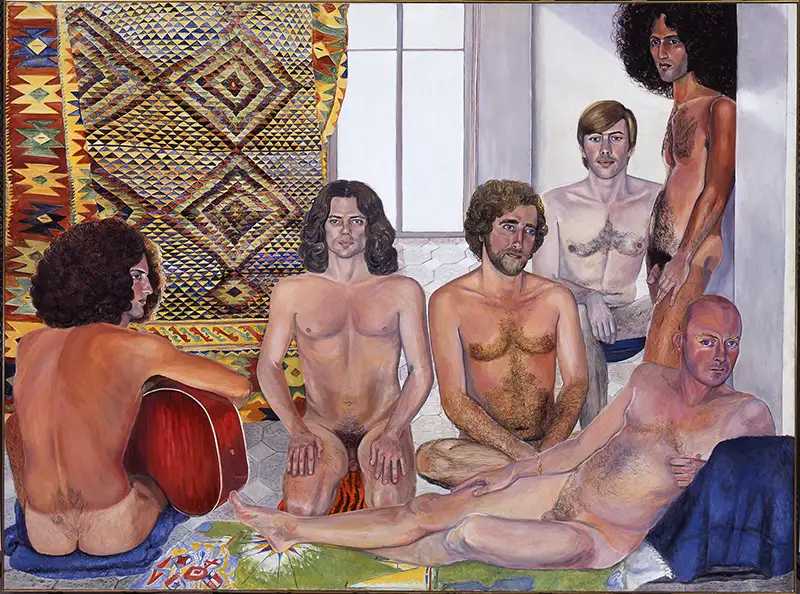
Sylvia Sleigh, The Turkish Bath
Smart Museum of Art, The University of Chicago, Purchase, Paul and Miriam Kirkley Fund for Acquisitions
Sleigh first came to critical attention during the 1960s and 1970s for her reversal of academic gender norms, posing nude male friends as odalisques and bathers or as grooming before a mirror; time-honoured themes traditionally reserved for women models. A paradoxical veneration for art history suffuses these works: despite her radical subversion of the male gaze and its longstanding taste for the passive female muse, the artist maintains a reverence for the canon, quoting allegorical compositions of early Flemish, Pre-Raphaelite and sixteenth-century Venetian masters.
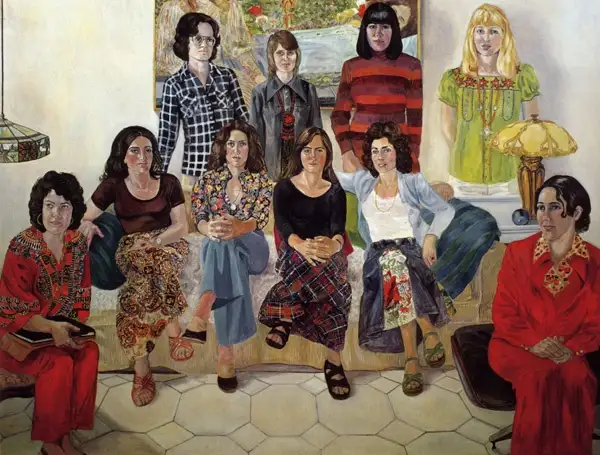
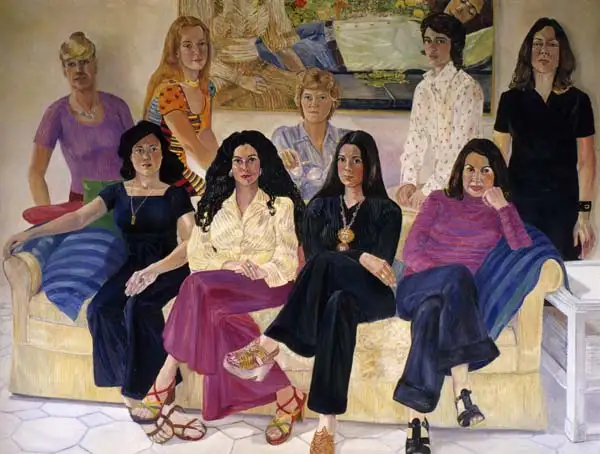
SoHo 20 Group Portrait (diptych)
1974, Oil on canvas, 183 x 244 cm. Courtesy of The University of Missouri, St. Louis.
Sleigh’s practice, however, was not a simple inversion of the power dynamics of these conventions. She rejected the objectification of her subjects, transforming her sitters from anonymous archetypes into identifiable characters from her own life. The artist’s commitment to individuality is most evident in her meticulous attention to facial expressions, style as evidenced in clothing, hair or interior design, and the naming of her artist peers in her titling. She was explicit about her intent, stating, “I always painted people, and always people I know. The importance of individualism — every leaf, every person is precious, and should be loved.”
From this quote was taken the title of the solo exhibition of Sleigh’s works currently showing at Ortuzar Gallery in New York. Sylvia Sleigh: Every leaf is precious is the first solo exhibition of the artist’s works in New York in over 15 years, and brings together works ranging from an early 1950 self-portrait painted in London to costumed scenes staged as late as 1996, with a focus on significant portraits made at the height of Sleigh’s visibility in the late 1960s and 1970s.

Sylvia Sleigh: Every Leaf is Precious at Ortuzar Gallery, New York
Courtesy of Ortuzar Gallery
Born on May 8, 1916, in Llandudno, Wales, Sylvia Sleigh developed an early interest in art. She pursued formal education at the Brighton School of Art in Sussex, England. During World War II, Sleigh operated a clothing business in Brighton, designing hats, coats, and dresses. In 1941, she relocated to London, where she held her first solo exhibition in 1953 at the Kensington Art Gallery. It was in London that she met art critic Lawrence Alloway; the couple married in 1954 and moved to the United States in 1961 when Alloway accepted a curatorial position at the Solomon R. Guggenheim Museum.
Sleigh's relocation to New York marked a pivotal shift in her artistic career. Immersed in the burgeoning feminist movement, she became an advocate for women's representation in the arts. Her paintings from this period reflect a deliberate challenge to traditional gender dynamics in art. By portraying male nudes in poses traditionally associated with female subjects, Sleigh subverted conventional representations and invited viewers to reconsider societal norms regarding gender and the gaze.
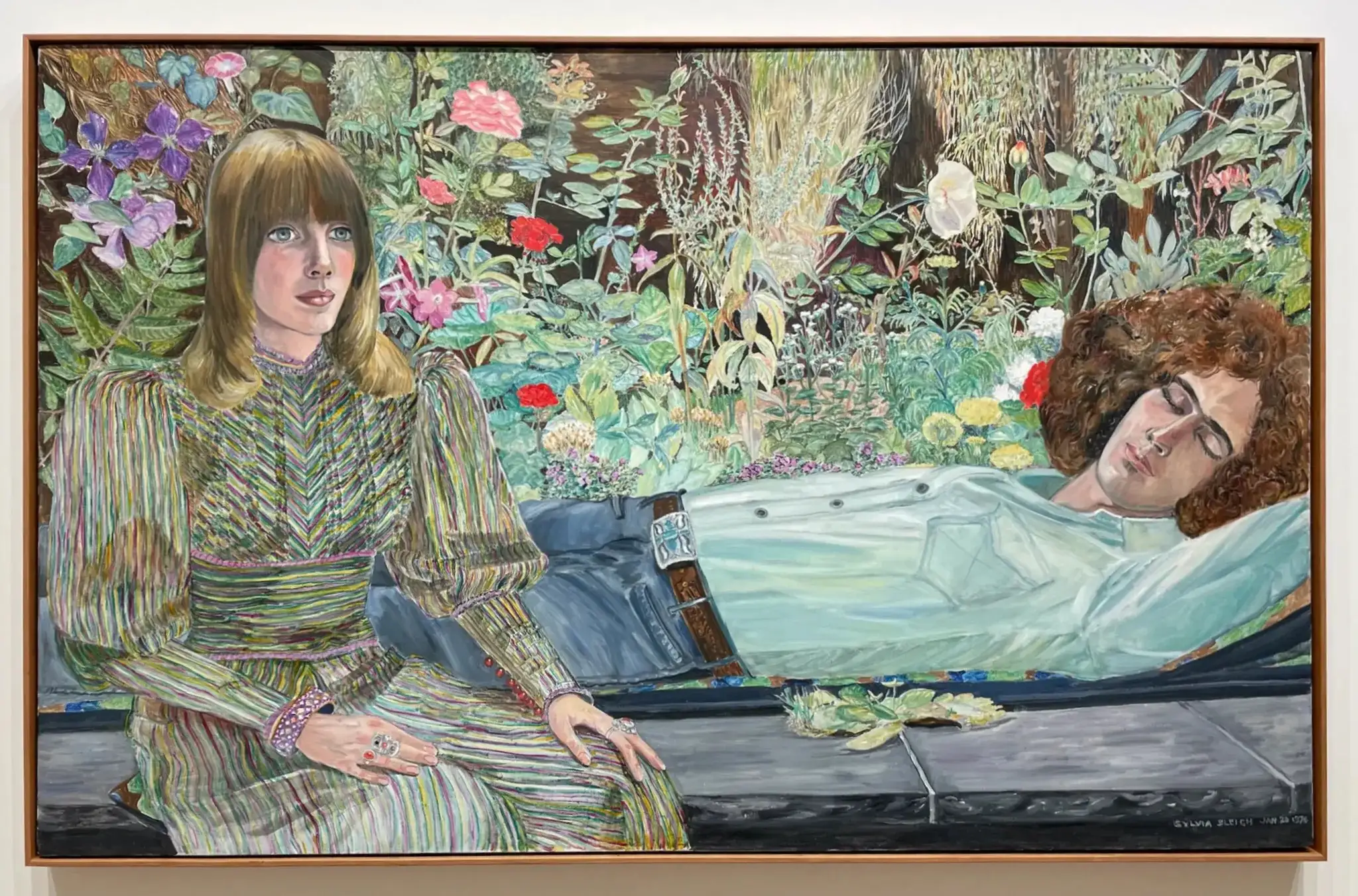
Sylvia Sleigh, "October: Felicity Rainnie and Paul Rosano"
photo Natalie Haddad/Hyperallergic
Beyond her provocative nudes, Sleigh's oeuvre includes numerous portraits of fellow artists, critics, and friends. Her approach to portraiture is characterised by meticulous attention to detail and a commitment to capturing the individuality of her subjects. Through her work, Sleigh sought to democratise portraiture, moving beyond idealised representations to embrace a more authentic and inclusive approach.
Sleigh's impact extends beyond her paintings; she was a dedicated educator and mentor. She taught at institutions such as the State University of New York at Stony Brook and the New School for Social Research, influencing a generation of artists through her teaching and advocacy.
Her contributions have been recognized through numerous awards and honors. In 2008, she received the Distinguished Artist Award for Lifetime Achievement from the College Art Association, and in 2011, she was posthumously awarded the Lifetime Achievement Award by the Women's Caucus for Art.
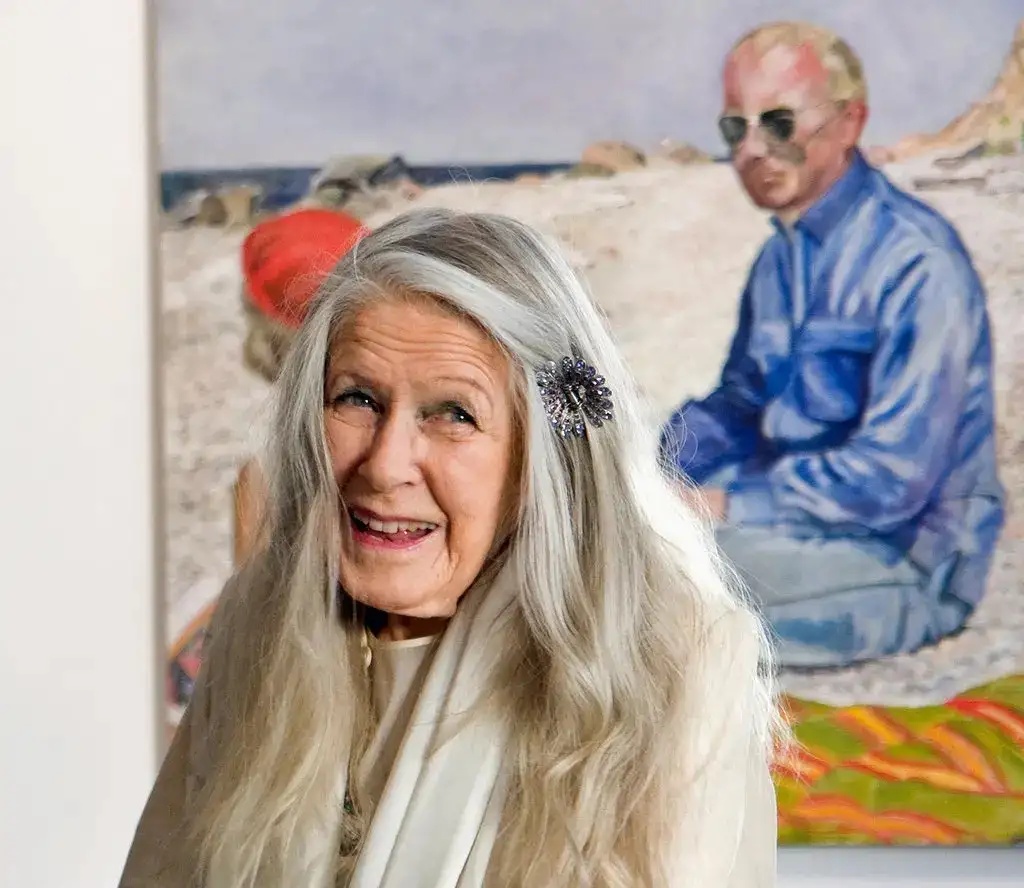
Portrait of Sylvia Sleigh
photographed by Cary Whittie
Sleigh's works are held in collections including the National Portrait Gallery in London, the Art Institute of Chicago, and the National Museum of Women in the Arts. Her paintings continue to be exhibited posthumously, reflecting enduring interest in her exploration of gender and representation.
Sleigh's legacy lies in her fearless exploration of gender dynamics and her commitment to challenging societal norms through art. Her work continues to inspire contemporary discussions on representation, identity, and the power of the gaze, cementing her place as a pivotal figure in the history of feminist art.
‘Sylvia Sleigh: Every leaf is precious’ is showing at Ortuzar Gallery New York, 12th February to April 5th 2025.